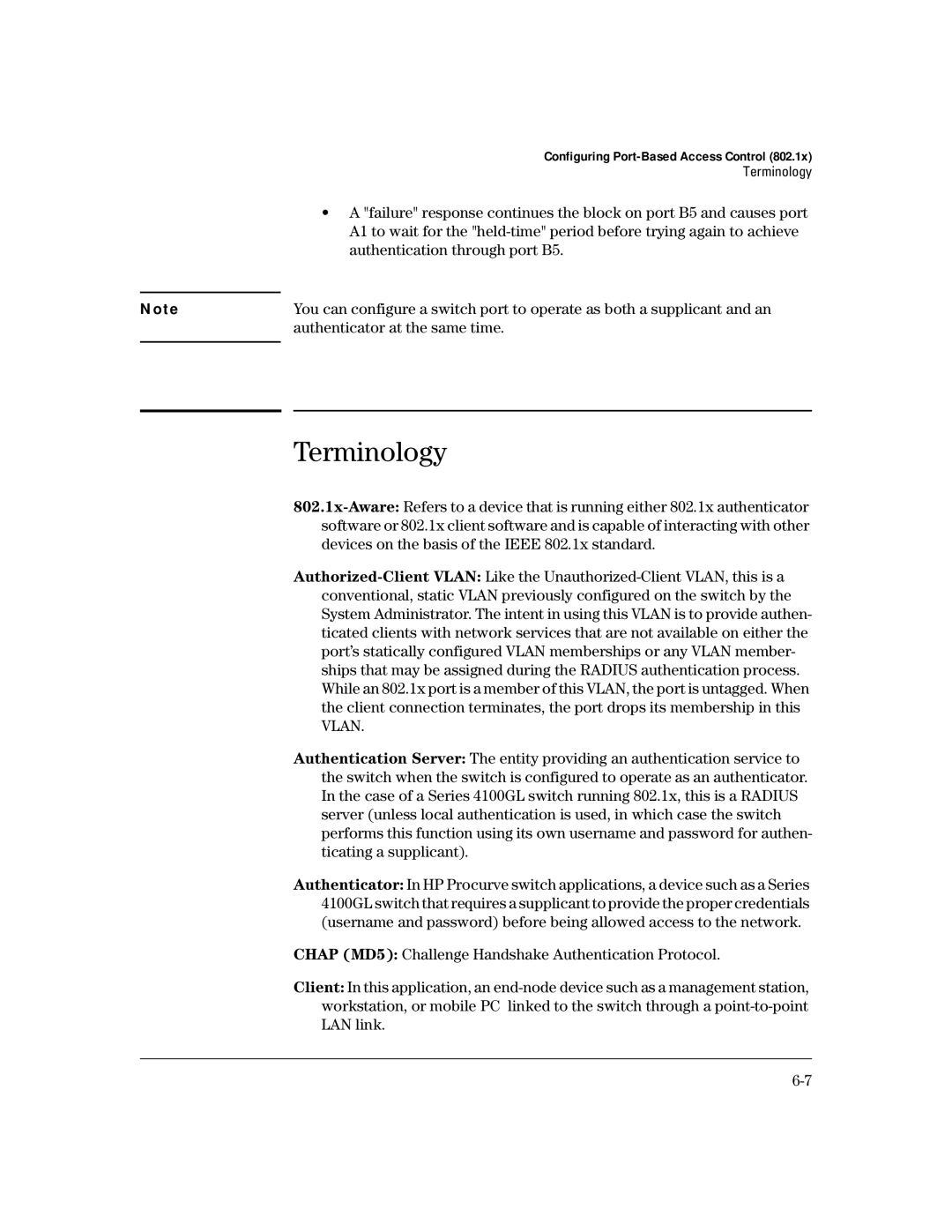
N o t e
Configuring Port-Based Access Control (802.1x)
Terminology
•A "failure" response continues the block on port B5 and causes port A1 to wait for the
You can configure a switch port to operate as both a supplicant and an authenticator at the same time.
Terminology
Authentication Server: The entity providing an authentication service to the switch when the switch is configured to operate as an authenticator. In the case of a Series 4100GL switch running 802.1x, this is a RADIUS server (unless local authentication is used, in which case the switch performs this function using its own username and password for authen- ticating a supplicant).
Authenticator: In HP Procurve switch applications, a device such as a Series 4100GL switch that requires a supplicant to provide the proper credentials (username and password) before being allowed access to the network.
CHAP (MD5): Challenge Handshake Authentication Protocol.
Client: In this application, an
